Relatively obscure edible plants, yellow sweet clover and the closely related white sweet clover can both be used as an herb. While some foragers will know they can make a nice tea, there's other uses for them you might like to try. Today we'll go over some background on the plants and how I use them in the kitchen to impart a vanilla-like aroma to foods the same way I use sweet-scented bedstraw.
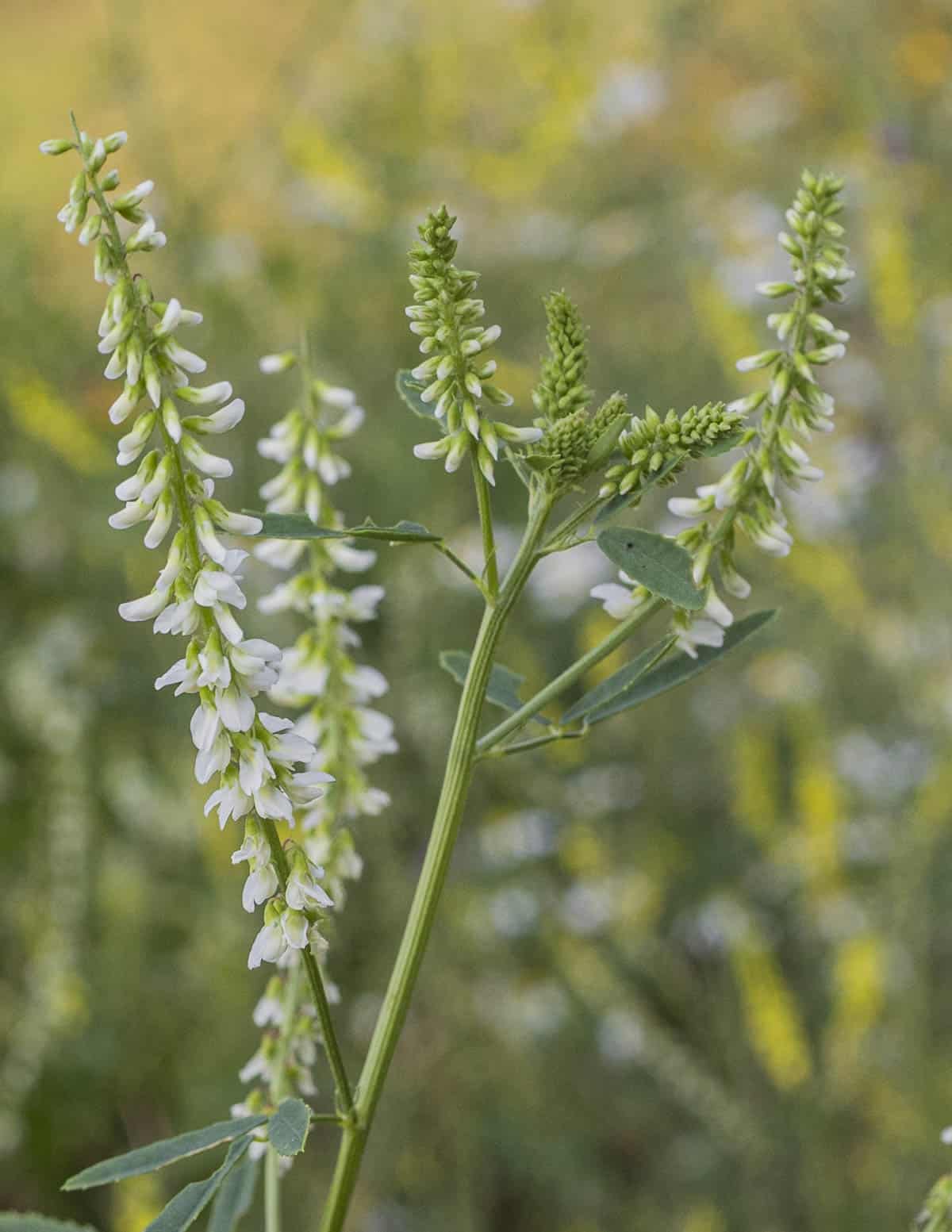
Background
Both Yellow sweet clover (Melilotus officinalis) and white sweet clover (Melilotus albus) were brought from Europe as a forage crop for cattle. As is the case with plenty of European plants, they took hold in North America and are now widespread, invasive weeds. Melilotus altissimus, or tall yellow sweet clover is another similar species found from Michigan to the East Coast.
On the bright side, unlike some plants (garlic mustard) at least they're nitrogen-fixing legumes. That said, like other invasive plants they have the potential to crowd out native species and are problematic in places. They're also attractive to bees, and can be a source of clover honey.

I knew that some foragers work with these plants, but it wasn't until a few months ago visiting my fathers farm near Grove City that I understood why.
While checking on our truffle orchard (more on that to come) I caught a whiff of coumarin on the wind coming from a patch of white clover in flower, and then everything made sense.
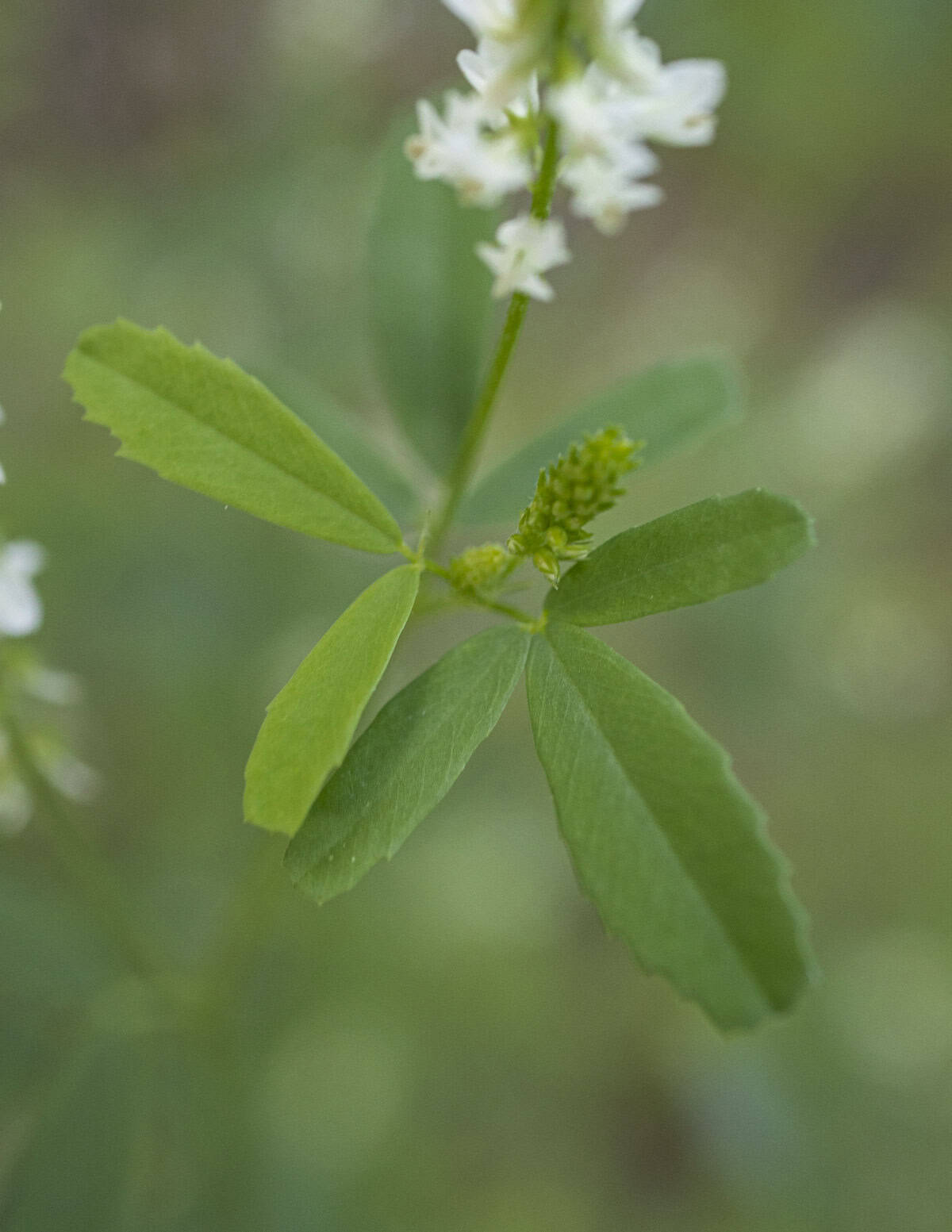
If you're unfamiliar, coumarin was historically used as a component of Mexican vanilla extract. The compound is found in many plants, many of which are grown as hay to feed cattle.
While it was banned in the United States due to complications it can have with people on blood thinning medications, a concentrated, lab-produced version is much more potent than the naturally occurring compounds in plants foragers will harvest.
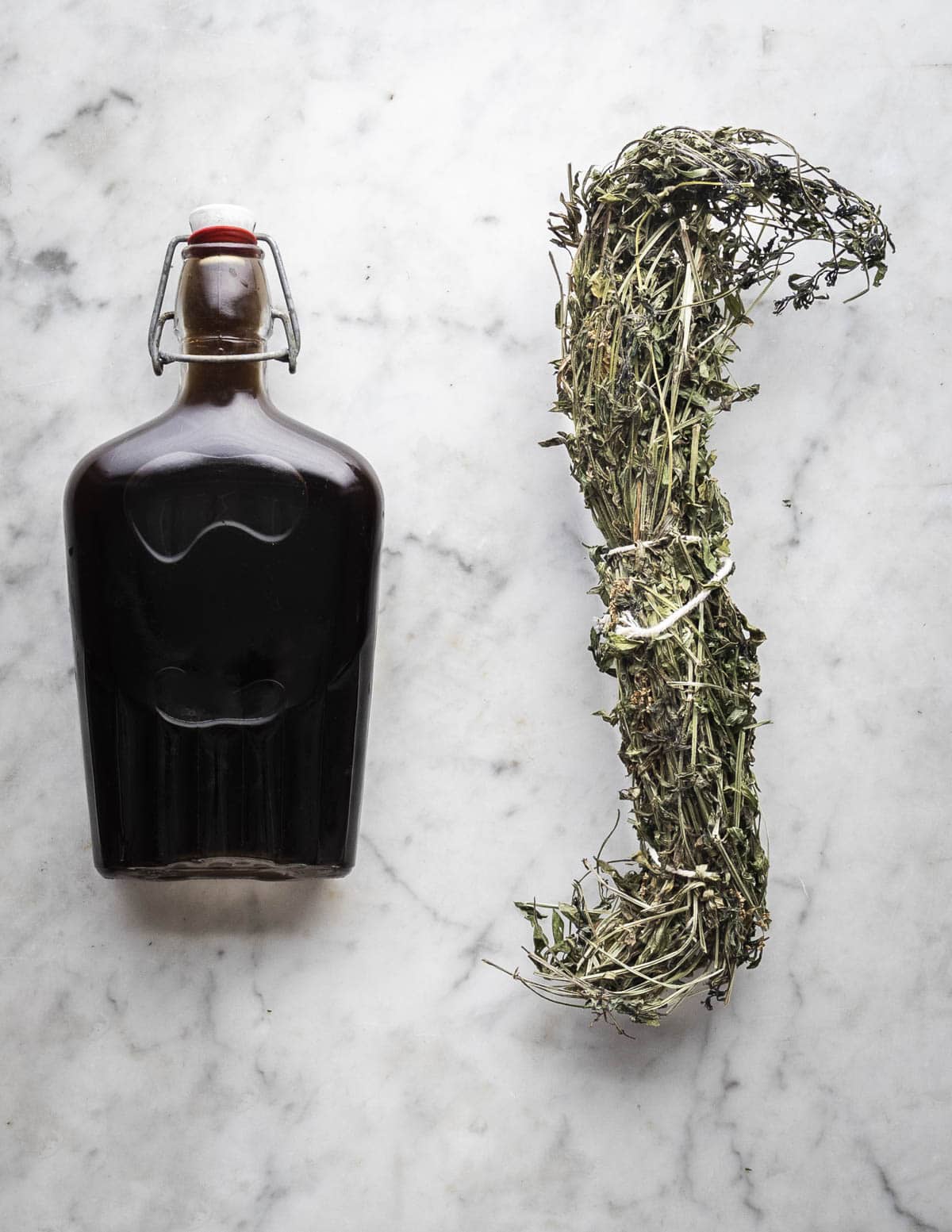
By contrast, there's no restriction on coumarin-containing ingredients in Europe like the famous Tonka bean beloved by chefs. The now infamous tonka bean raid by the FDA at Alinea restaurant in Chicago aside, I still see tonka bean on menus in the Twin Cities on occasion. Achatz reputedly continued to use the plant after the raid by the FDA, which should tell you something.
After I shared it in my first book, one of my friends started selling a commercial extract from Galium triflorum a few years ago.
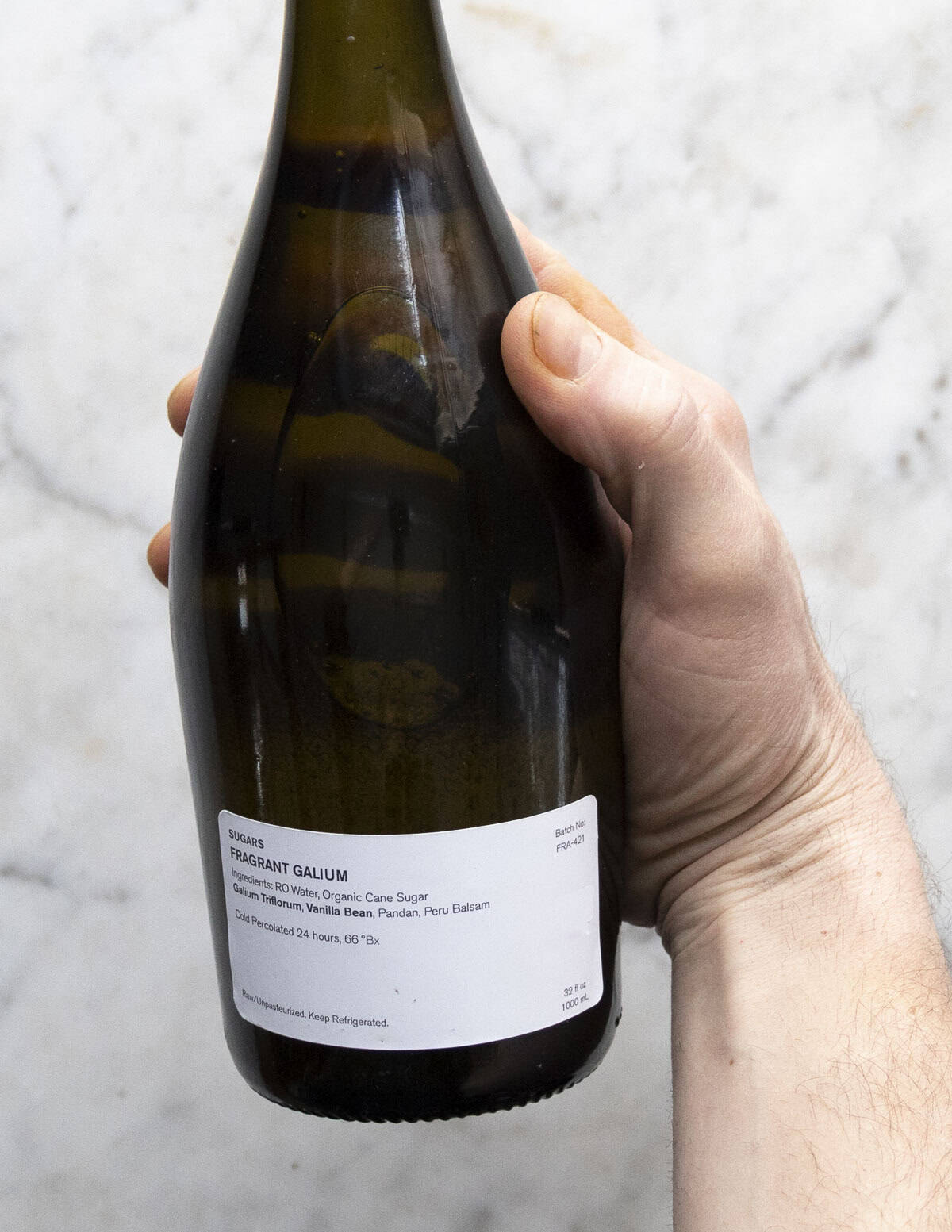
Similar Species / Confusing Plants
There's a confusing amount of clovers out there. Trifolium repens is also known as white clover. Compared to Melilotus species it's much shorter, and at most I've probably seen them grow to 12 inches tall, where Melilotus is towering by comparison, and can be as tall as a full grown adult or over a meter tall. When dried, Trifoliums have a mild flavor that can't hold a candle to Melilotus.

Red Clover (Trifolium pratense) is similar to Trifolium repens, but has a noticeable pinkish coloration to the flowers. Like its cousin, it has a mild flavor that can be nice added to a tea blend, but beyond that I don't do much with it. In the world of edible plants, both varieties of Trifolium are novelties for me.
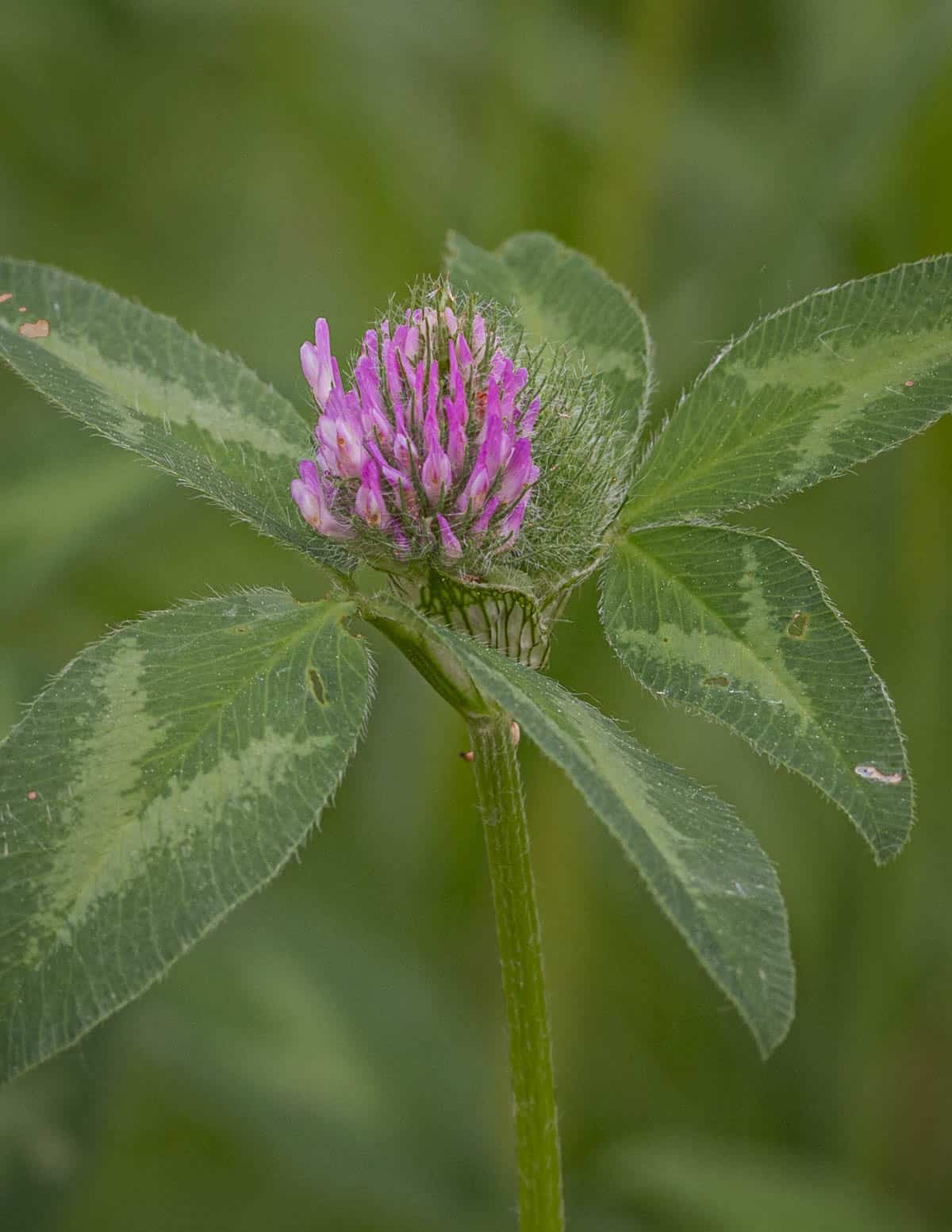
While it lacks any aroma and has leaves that don't resemble a legume, annual ragweed flowers at the same time as sweet clover and also bares a passing resemblance that could confuse some people.
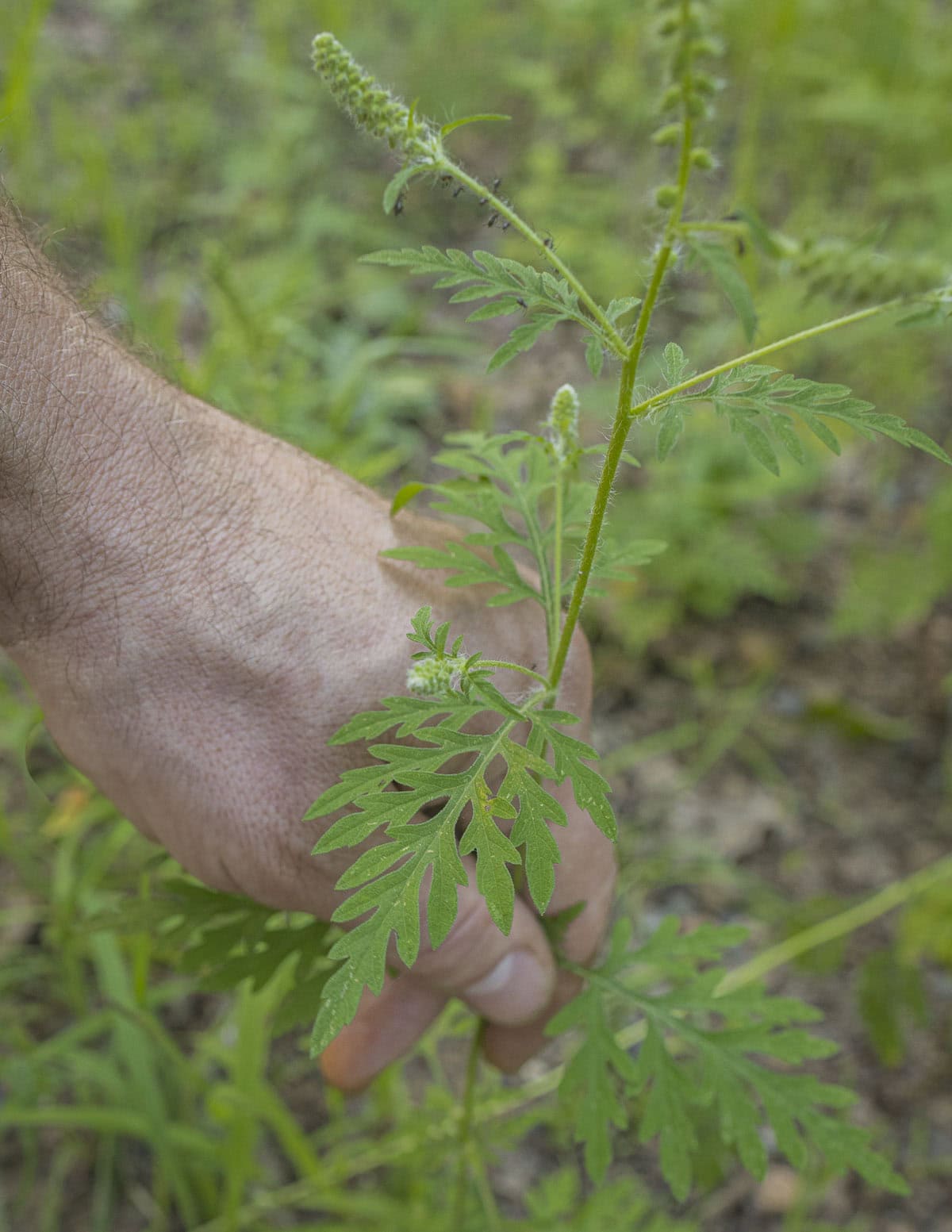
Harvesting and Processing
Like many aromatic plants, sweet clover will have the strongest aroma when flowering so that's the best time to harvest it. I can only assume the intensity of the aroma when flowering helps attract pollinators, or humans in this case.
To harvest the plants, I cut the healthy, bright green plants-leaves, stems and all, tying them into a bundle with a fan blowing on them until completely dry, which takes a few days. Just like Galium triflorum, you can also use a dehydrator.
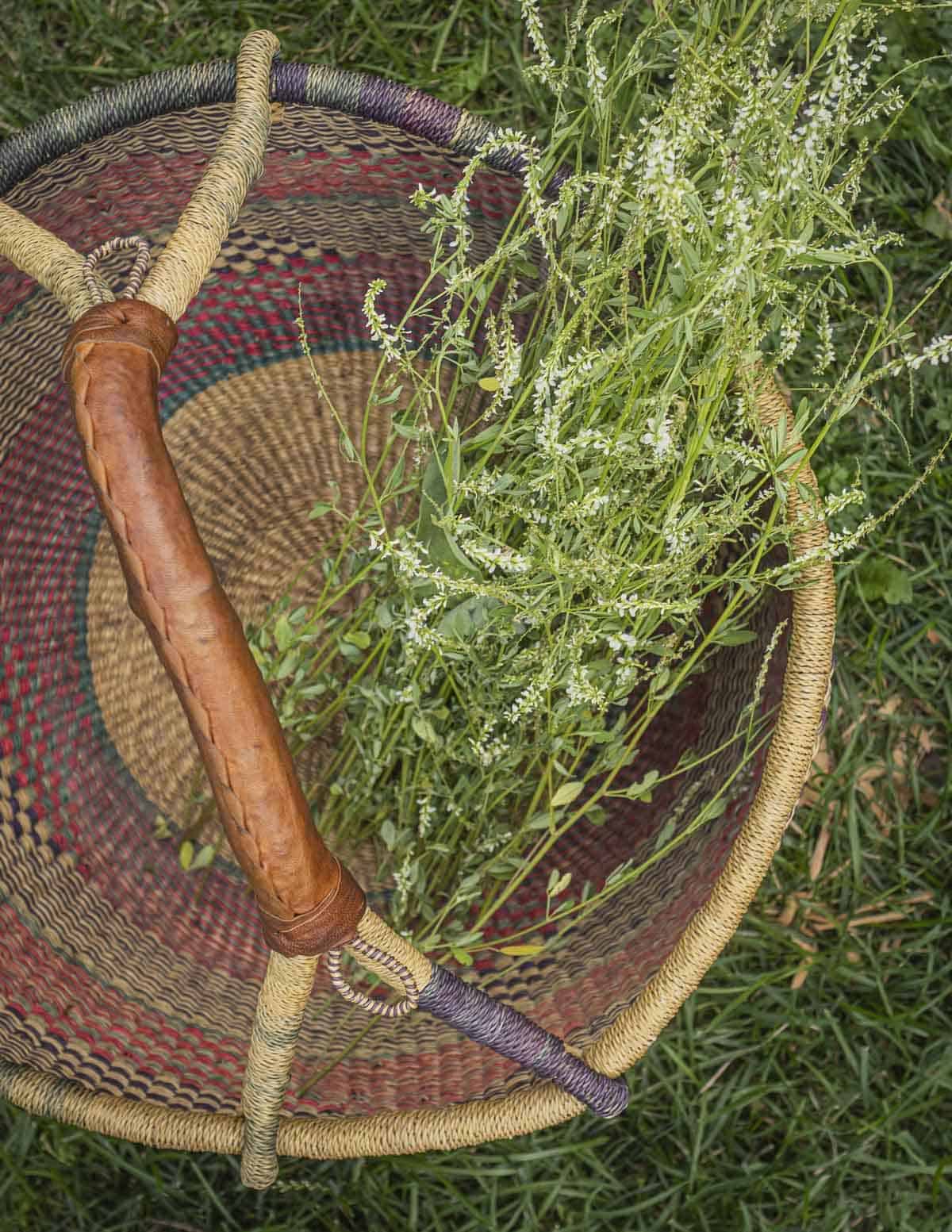
While some plants can simply be hung to dry in the sun, out of an abundance of caution I can only recommend drying coumarin-containing plants with a strong fan or using a dehydrator to ensure there's no chance of them molding.
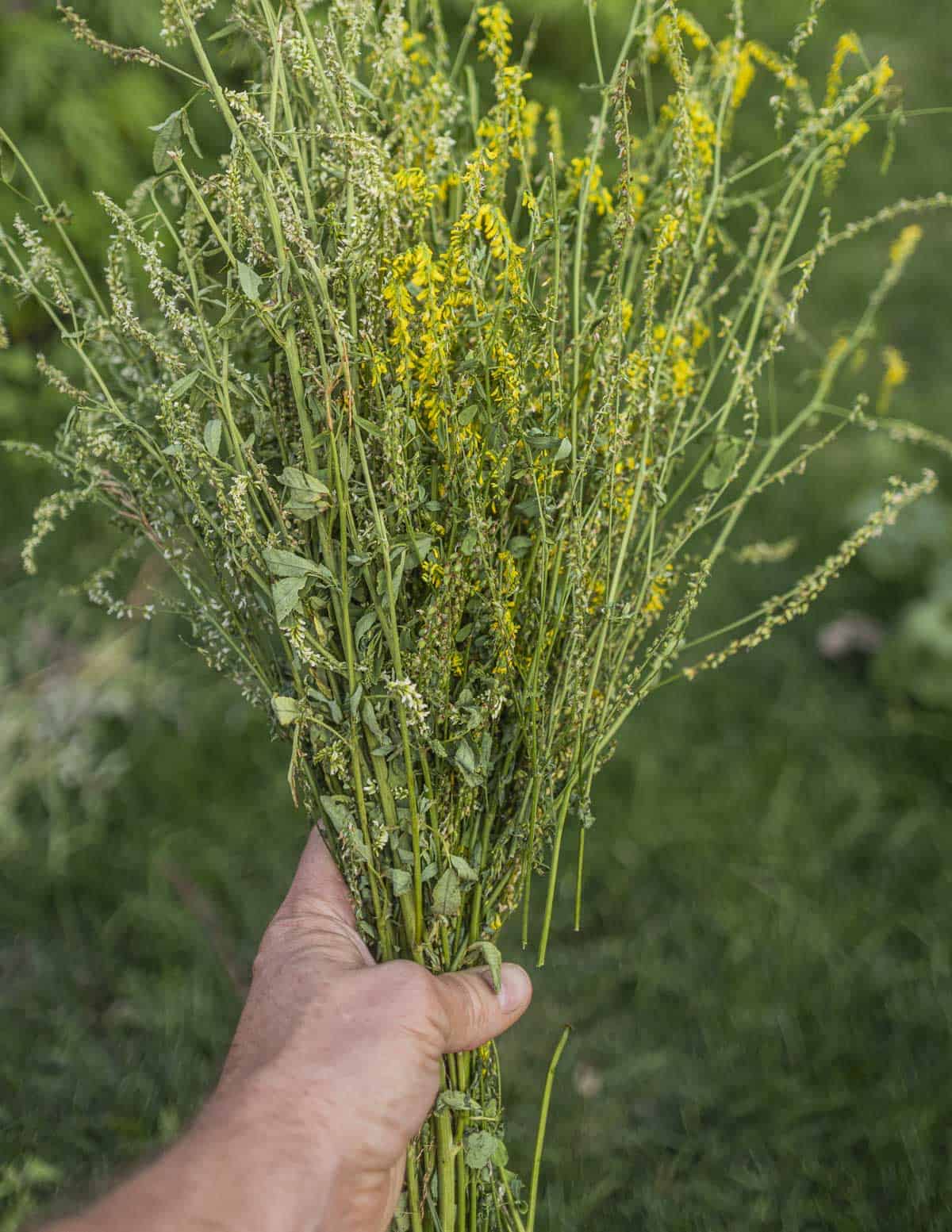
Eating moldy plants is a known cause of sweet clover disease or dicoumarol poisoning-a problem for cattle that can cause blood-clotting issues.
While that might sound alarming, keep in mind that cows eat a lot more roughage than humans and dosage makes the poison. That said, these plants, as well as Galium triflorum are ones people on blood thinning drugs should probably skip.
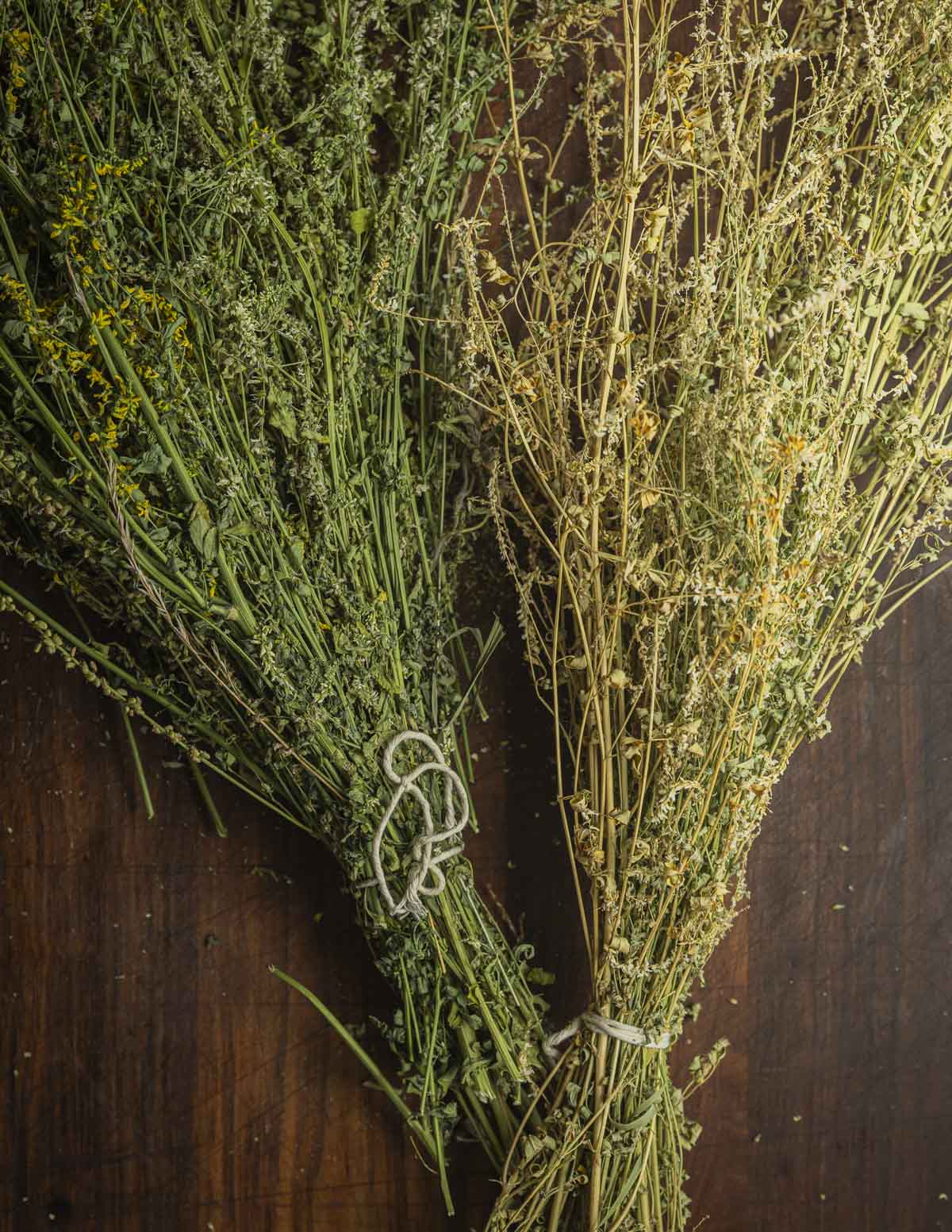
Once the plants are dried the hay-like, vanilla aroma intensifies dramatically. I have a few bundles on my porch right now, and every time I walk into the room I'm greeted with the scent. Once you catch a whiff, you'll understand why sachets of dried plants like these and bedstraws were placed in pillowcases for their aroma.
General Cooking & Sweet Clover Recipes
The dried plants can be infused directly liquids, just like sweet bedstraw and woodruff, although it's not quite as potent. The aroma is fat-soluble, meaning it easily transfers into dairy, like cream, creme fraiche or yogurt. The aroma is grassy and sweet, and will remind you of fresh cut hay with vanilla notes.
Creme Fraiche
To make clover creme fraiche, wrap ¼ oz (scant ⅓ cup) of snipped, dried plants in cheese cloth and bring to a simmer in 2 cups of heavy cream. Cool and discard the bouquet, squeezing out as much liquid as you can.

Add one tablespoon buttermilk and leave the mixture in a warm place, uncovered, until thickened, about 24 hours and store in the fridge. Sweeten it with maple syrup. It will be firm like Greek yogurt when chilled, and can be whipped to soft peaks in a fraction of the time it takes to whip typical cream.
Stalks of dried clover can also be used as an herb in the same way European chefs cook with hay. In older books it's not uncommon to find dishes like goose or turkey stuffed with hay. It'll fill the kitchen with a sweet, grassy aroma.
Sweet Clover Extract
Probably the most versatile use of the plant is a homemade vanilla-like extract. To make an extract, take the dried bundle of plants and cut them up with a scissors, fill up a quart jar with them, then fill the jar with brandy or rum. Vodka works in a pinch. Leave the jar to infuse for a few weeks, then strain and store in a pantry where it'll be good for a very long time.
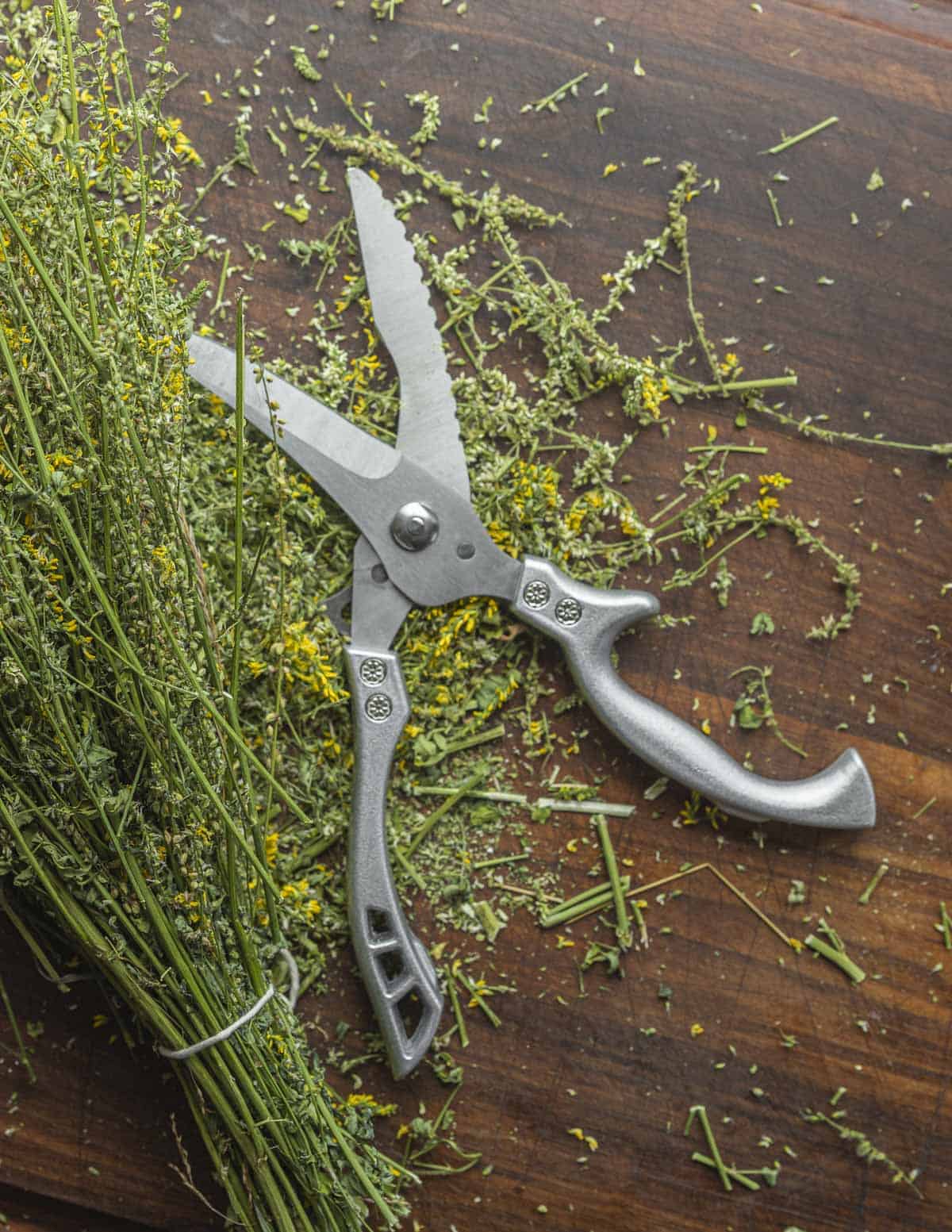
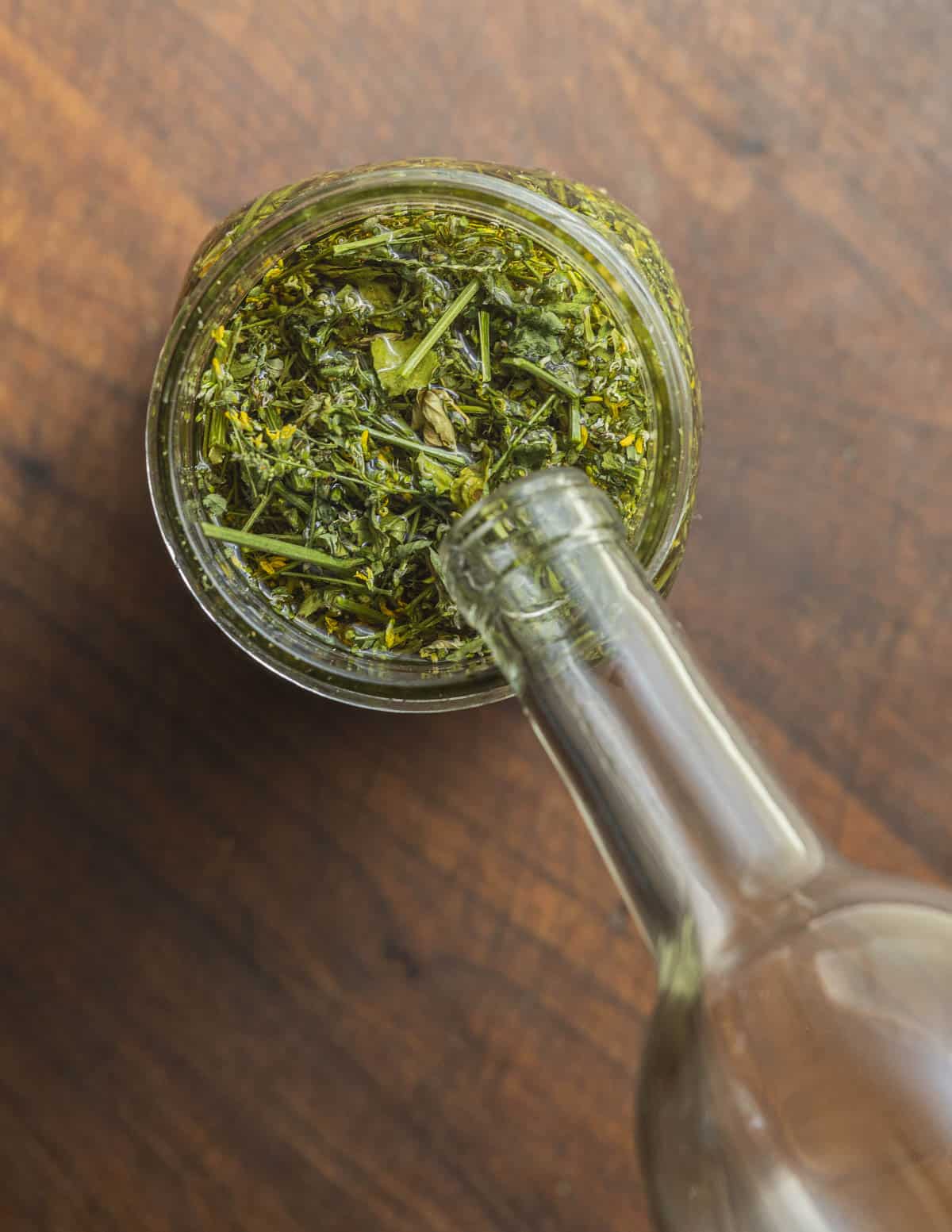
The extract can be used in cooking the same way you would vanilla extract, but I often add a tiny bit more, adding it to taste. I served clover creme fraiche recently on my wild blueberry upside down cake.
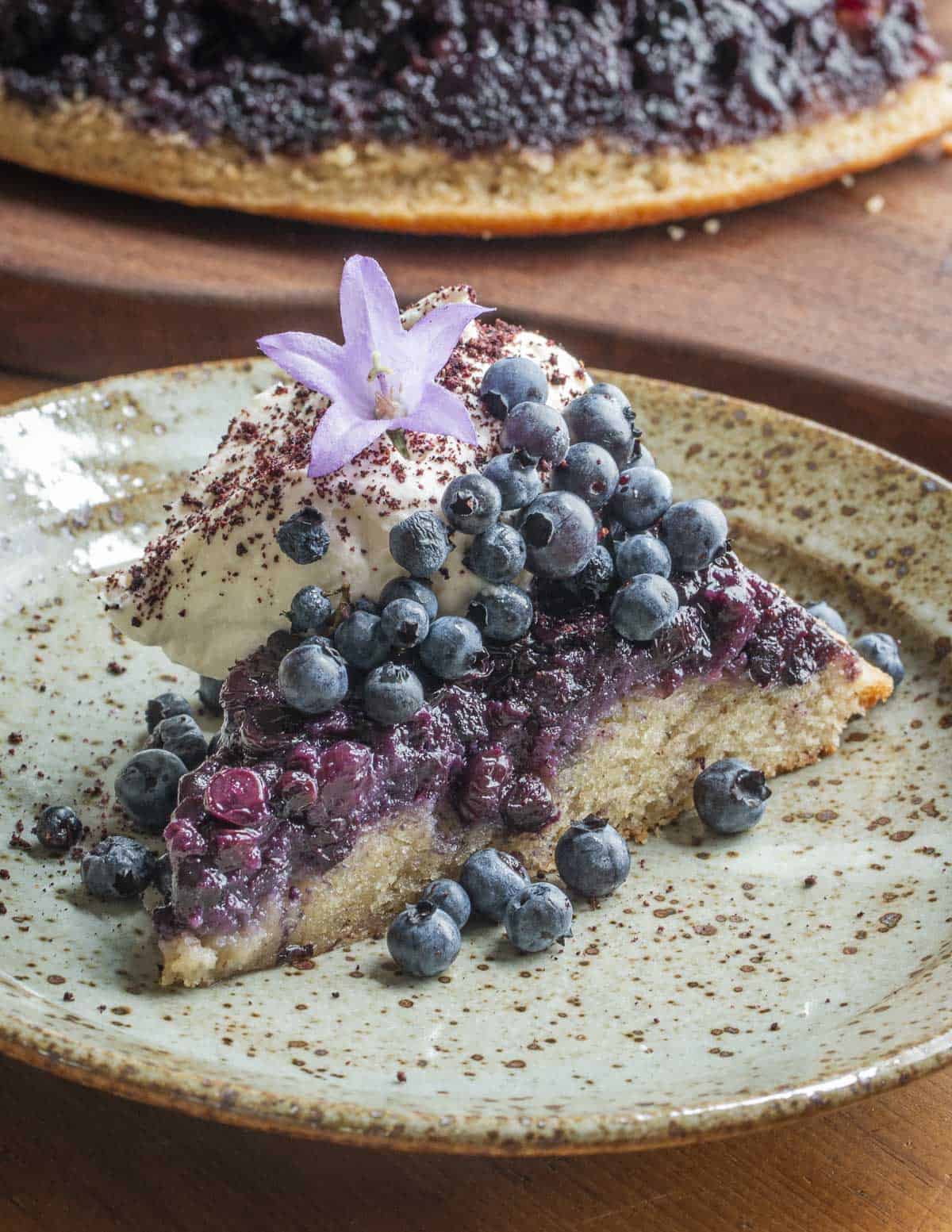
My friend, author and wine aficionado Dara Moscowitz-Grumdahl described it as pleasantly woody-tasting, another person said it reminded them of curry.
Here's a few examples of where the dried plants and extract can be used:
- Anywhere you use vanilla extract
- Ice Cream
- Marinated fruit
- Whipped cream-based desserts and cakes, especially with fruit, like Eton mess
- Custards, fillings and dessert sauces like creme anglaise
- Infusing yogurt during the initial heating step
- Teas, infusions, cocktails and drinks
- Liquors like homemade vermouth, wild cherry whiskey or walnut wine
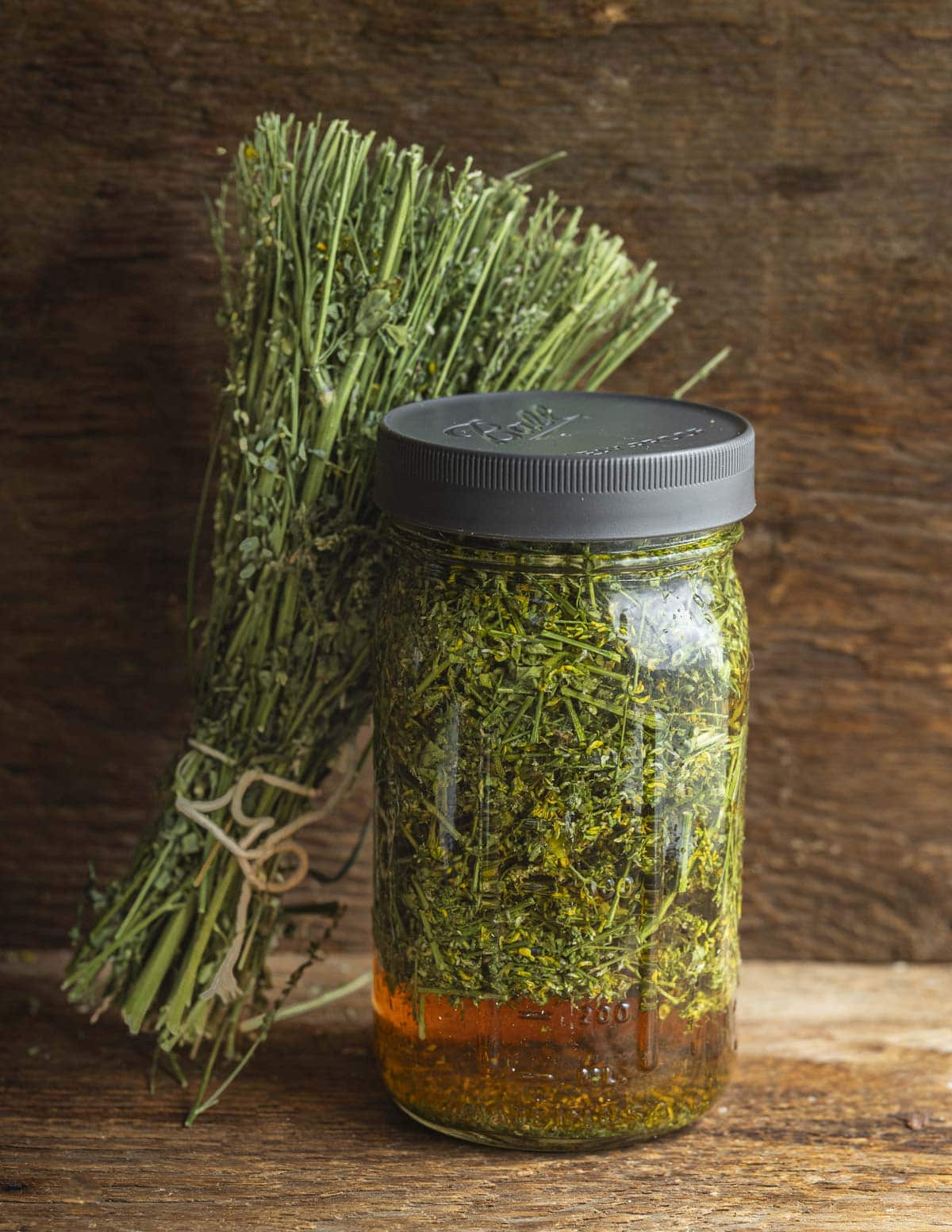
In conclusion, sweet clover is useful in the kitchen, bountiful and easy to identify. While the flavor's unique and the plants are widely available, it doesn't quite stand up to the potency of Galium triflorum. However, as Galium triflorum is more difficult to separate from odorless look a likes, it's a great stand-in and is easier to harvest in volume.

Leave a Reply